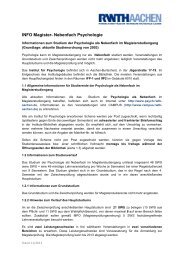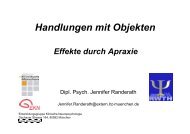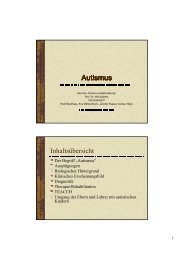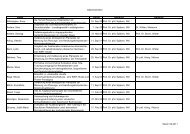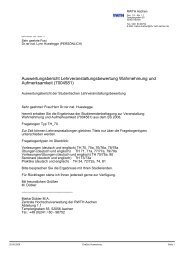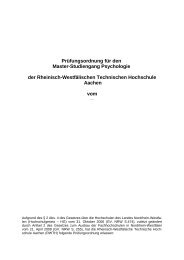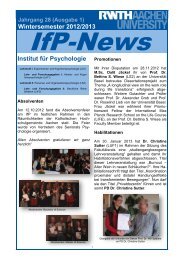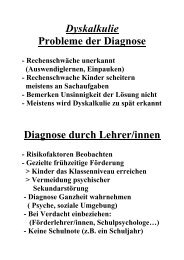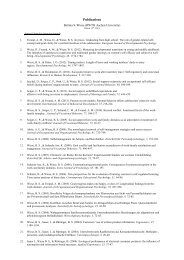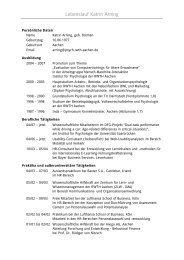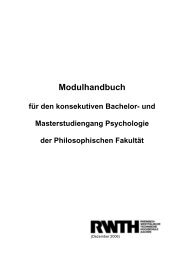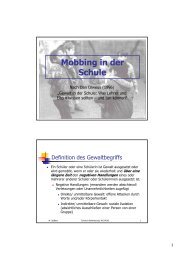Crossmodal Action 1 Crossmodal Action Selection - RWTH Aachen ...
Crossmodal Action 1 Crossmodal Action Selection - RWTH Aachen ...
Crossmodal Action 1 Crossmodal Action Selection - RWTH Aachen ...
You also want an ePaper? Increase the reach of your titles
YUMPU automatically turns print PDFs into web optimized ePapers that Google loves.
<strong>Crossmodal</strong> <strong>Action</strong> 22<br />
References<br />
Bekkering, H., Adam, J. J., Kingma, H., Huson, A., & Whiting, H. T. A. (1994). Reaction<br />
time latencies of eye and hand movements in single- and dual-task conditions.<br />
Experimental Brain Research, 97, 471-476.<br />
Byrne, M. D., & Anderson, J. R. (2001). Serial modules in parallel: The psychological<br />
refractory period and perfect time-sharing. Psychological Review, 108, 847-869.<br />
Dunbar, K., & MacLeod, C. M. (1984). A horse race of a different color: Stroop interference<br />
patterns with transformed words. Journal of Experimental Psychology: Human<br />
Perception and Performance, 10, 622-639.<br />
Duncan, J. (1979). Divided attention: The whole is more than the sum of its parts. Journal of<br />
Experimental Psychology: Human Perception and Performance, 5, 216–228.<br />
Fagot, C., & Pashler, H. (1992). Making two responses to a single object: Implications for the<br />
central attentional bottleneck. Journal of Experimental Psychology: Human Perception<br />
and Performance, 18, 1058-1079.<br />
Gottsdanker, R. (1979). A psychological refractory period or an unprepared period? Journal<br />
of Experimental Psychology: Human Perception and Performance, 5, 216-228.<br />
Hancock, P. A., Oron-Gilad, T., & Szalma, J. L. (2007). Elaborations of the multiple-resource<br />
theory of attention. In A. F. Kramer, D. A. Wiegmann, & A. Kirlik (Eds.), Attention:<br />
From theory to practice (pp. 45-56). Oxford: Oxford University Press.<br />
Hazeltine, E., Ruthruff, E., & Remington, R. W. (2006). The role of input and output modality<br />
pairings in dual-task performance: Evidence for content-dependent central interference.<br />
Cognitive Psychology 52, 291-345.<br />
Hazeltine, E., Teague, D., & Ivry, R. B. (2002). Simultaneous dual-task performance reveals<br />
parallel response selection after practise. Journal of Experimental Psychology: Human<br />
Perception and Performance, 28, 527-545.



